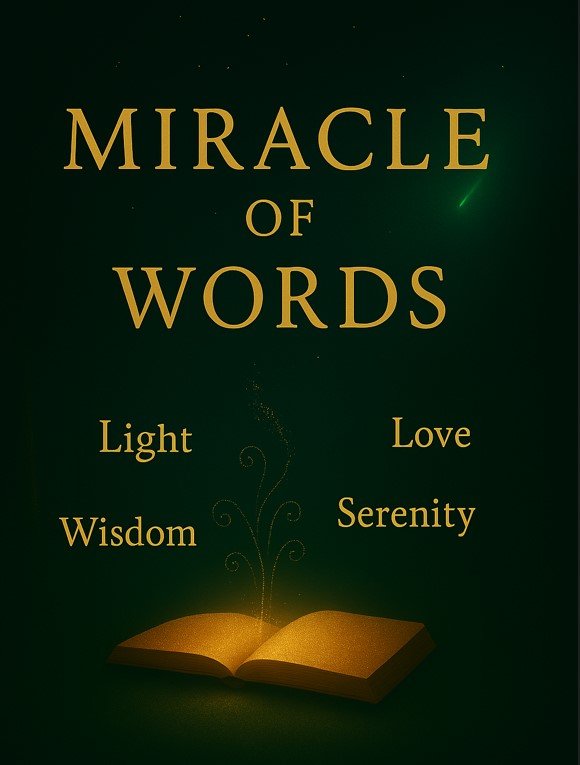The Meaning of Writing and the Invisible Architecture
by Anisoara Laura Mustetiu
What does it mean to write with the soul? What does it mean to give voice and purpose to emotions, to transform them into a narrative architecture that comes alive, touches, and heals?
In this essay, I invite you to explore with me how meaning and structure intertwine in literature—not only as technique, but as a way of life.
Literature as Personal Healing or Inspiration
It is said that “Art begins where wounds start to speak.”
I’ve just finished writing a new book, Letters for My Soul—a collection of letters addressed to my own soul, each centered around a universal theme: love, roots, challenges, freedom. Here, healing became a beautiful surprise, a consequence, a quiet victory—not because I consider myself a healer, but because these letters may encourage reflection and inspire readers to reconnect with their inner selves. That connection is part of emotional intelligence, an essential quality for navigating life’s challenges. Without it, we risk becoming like a leaf carried by the wind—driven by external forces instead of guided by our inner strength.
Sometimes I travel as an observer through the shadows of the past, looking at certain events with mature eyes and understanding them differently. In that new gaze, forgiveness is born—and from forgiveness, healing. Just as it happened when I wrote the novella Between Kiss and Pain. In that journey, I didn’t look back to remember the pain, but to remember how I survived and overcame the trials. The lessons learned are confessions, but also gifts offered from the soul, which can be an inspiration for those seeking light in their own labyrinths.
Between Kiss and Pain has a calm, luminous, well-intentioned architecture. An organic structure: it breathes, touches, and surprises. Its form resembles a spiral, where the narrative circles in each chapter around a profound truth. Here, reflections enter gently and refreshingly, like snowflakes—fresh, pure, cooling—awakening human consciousness.
Viewed as a whole, the book’s architecture reflects a mosaic—each letter holds its own independent role, yet together they form a faithful portrait of an emotional life.
Justice in the Voice of Literature
Literature is not merely introspective—it is also a mirror of society, where the author reflects on social mentalities, collective silences, and sometimes gives voice to the mute cries of the wronged.
In the novella The Price of Honor, this theme unfolds through a haunting love story set in a Transylvanian village around the 1970s. In that rural setting, steeped in tradition and judgment, love becomes a battleground between social norms—between what was and what could have been. The story speaks of imposed shame and lost dignity, of women’s silence and the price they pay for the courage to love beyond convention. In this narrative, literature becomes both witness and healer—for me, as a writer who reclaimed the well-deserved honor of her mother, offering readers a story that may stir thought and reflection. When truth is spoken through art, it becomes hard to ignore.
Justice in literature does not always mean resolution. Sometimes, it means recognition. To give voice to the voiceless is, in itself, an act of justice.
The meaning of literature is not static—it can touch the hearts of those who read. Just as my stories are no longer only mine. Once shared, they become for readers pathways into unfamiliar worlds.
A literary example of social injustice that marked me in adolescence was Gavroche, the orphaned child from Victor Hugo’s Les Misérables.
From a structural perspective, I carry in my mind a visual narrative architecture, shaped by my university studies. I often begin with the classic five-stage structure: exposition, rising action, climax, falling action, and resolution. To deepen the narrative, I use techniques such as flashbacks, foreshadowing, and shifts in perspective—including the omniscient viewpoint, which offers the reader an understanding beyond the characters’ consciousness.

Educational Literature
Literature can become a formative space for thought, emotion, and identity—especially for adolescents. In the book Between Kiss and Pain, through its characters, dilemmas, and emotional truths, young readers can come to better understand themselves and the world around them. These elements are reflected in the way the protagonist faces challenges, in the victories she earns, and in the lessons learned from defeat.
I feel that I write to plant depth, empathy, courage, and discernment into literature. My stories are an invitation to feel more deeply, to think more freely, to be braver. They reveal the consequences of injustice, but also the beauty of resilience.
From a structural perspective in this literary context, it can resemble an invisible choreography—a rhythm that guides emotion and movement. When used with intention, this choreography can shape how readers experience time, tension, and truth.
Self-Exploration – Imagination
Imagination allows us to see what logic cannot: emotional landscapes, worlds traversed by the soles of the mind, visions born from our own nothingness.
Rooted in poetry, my writing carries a figurative quality—rich in metaphors, personifications, and symbolic imagery. At times, I enjoy losing myself in the universe, swaying on rainbow hues and vanishing into stardust. I begin with an idea and let the unknown guide me. In those moments, writing becomes a journey of discovery—of story, but also of self.
From a structural perspective, it can act as a moderator that intensifies the pulse of the narrative: shaping how tension rises, how action breathes, and how resolution settles.
In literature, meaning, purpose, and structure intertwine in a subtle mechanism capable of reaching the deepest layers of being. It stimulates emotional intelligence and empathy, or serves as a mirror to social injustices. Imagination and figurative language can guide readers through unique journeys.
With a living architecture and the depth of significance it bestows upon people and places, literature holds the power to lead the reader’s searching gaze toward what is essential in life and in the human spirit.








